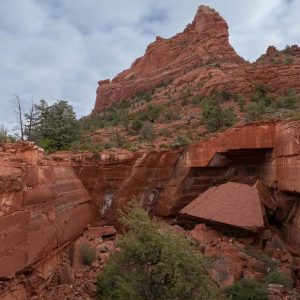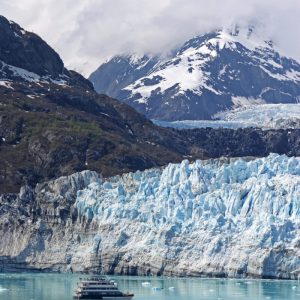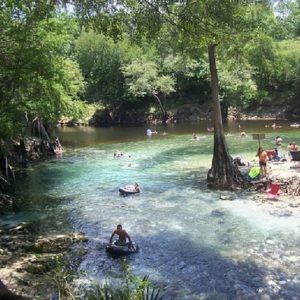
Are you vacationing in the USA from late March through June? Are you hoping to visit some of America’s best national parks? If so, then read on fellow travelers, as we present the 20 best national parks to visit in spring in the USA.
Contents
- 1. Rocky Mountain National Park
- 2 Mesa Verde National Park
- 3 Acadia National Park
- 4 Everglades National Park
- 5 Yosemite National Park
- 6 Denali National Park
- 7 Voyageurs National Park
- 8 Yellowstone National Park
- 9 Bryce Canyon National Park
- 10 Biscayne National Park
- 11 Capitol Reef
- 12 Hawaii Volcanoes National Park
- 13 Zion National Park
- 14 Grand Canyon National Park
- 15 Death Valley
- 16 Joshua Tree National Park
- 17 Great Smoky Mountains National Park
- 18 Arches National Park
- 19 Shenandoah National Park
- 20 Saguaro National Park
The 20 Best National Parks to visit in Spring in the USA
1. Rocky Mountain National Park
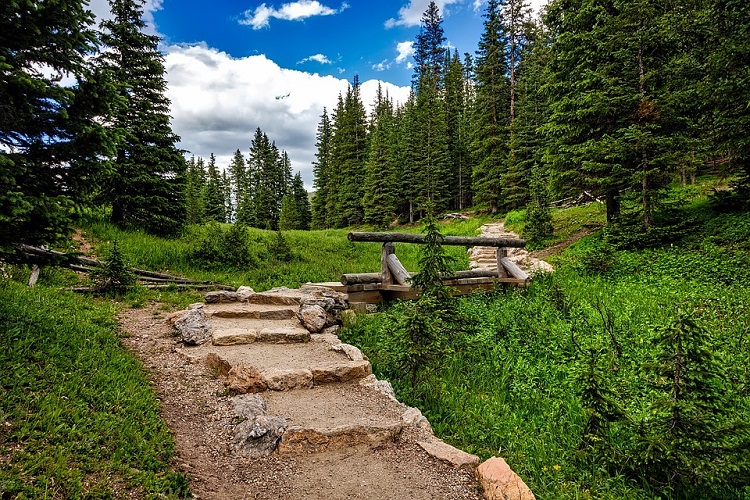
The Rocky Mountain National Park is not only one of the best parks to visit in the spring, but it is also one of the best places to visit in the state of Colorado and rates a double entry! Visiting before June means you’ll beat the crowds. The snow is melting, the waterfalls are once more starting to flow, the flora is coming to life again, and the resident animals are giving birth.
Spring is when this national park is most diverse. It’s a time when you can enjoy the snow at the higher elevations or hike through newly flowering meadows. Indeed, if you’re into hiking Spring is the best time to take such treks as the Beaver Mountain Trail Hike, the Horseshoe Park Hike, and the Upper Beaver Meadow Loop.
Yes, some hiking trails are covered with snow until May but you can always rent snowshoes in Grand or Estes Park. If you want to enjoy the scenic Trail Ridge Road, get there in the middle of May. Into flowers? The wildflowers bloom as early as late April on lower-elevation trails like Ouzel Falls or Nymph Lake.
Snow lovers can do some Spring skiing there. It’s better than winter for several reasons. You have longer days, warmer temperatures, quieter, less crowded slopes, and the prices are cheaper as well.
If you prefer a blend of both skiing and hiking, Spring’s an exceptional time to go snowshoeing through the park. It’s also a great time for newbies to try it. Remember, there’s a required reservation system from May 28th through October 28th. This is also a fine time to try staying in one of Colorado’s incredible treehouses too.
2 Mesa Verde National Park


Travel to this national park nestled in southwestern Colorado. Different from several other national parks in America, this place has more than deep gorges, lush forests, memorable mountain views, and more than 1000 endemic species. Here you will also find ancient Pueblo settlements from over 700 years ago. You can take a ranger-led tour of them as early as May.
You can also enjoy two of the most popular activities, hiking, and wildlife viewing while avoiding the summer tourists. You’re practically guaranteed to see black bears, deer, and turkeys. You can also go camping at the popular Morefield campground. It’s also a great place to see the stars too since this is an International Dark Sky Park. The absence of all artificial light here t night makes the stars look especially brilliant.
3 Acadia National Park

Maine’s Acadia National Park is one of the best parks to visit during spring. You avoid the summertime crowds, and can still go hiking and enjoy the budding new flora and newborn wildlife. You can also enjoy the tallest peak located on the East Coast–Cadillac Mountain.
This mountain is also arguably the first place in the country where you can see the sunrise for almost six months. Free of summer tourists, you can hike there and also The Beehive. Mind you, the latter includes ladders and iron rungs that are not exactly ideal for anyone who is afraid of heights.
If you’re not big on hiking, cruise the scenic 27-mile Park Loop Road. In fact, springtime is perfect for biking here as well! Beautiful Bar Harbor reopens in the spring so be sure to visit there too!
4 Everglades National Park


This national park in Florida is the nation’s largest subtropical wilderness. It spans an area of 1.5 million acres. Why go see the alligators, American crocodiles, birds, manatees, panthers, turtles, and other Everglades residents in the Spring?
It’s the weather! In the Spring, it is warm, but it isn’t hot and humid. It’s a big place and has three different entrances.
The main entrance is near Homestead at the informative Ernest F. Coe Visitor Center. If you’re based closer to Naples, enter at the Gulf Coast Visitor Center. Your third option is the North Entrance, Shark Valley.
While you can take a tram tour from the Shark Valley entrance, the more athletic travelers may bicycle to the 45-foot-high Shark Valley Observation Tower. Spring’s also a great time for camping, canoeing, fishing, and kayaking.
5 Yosemite National Park


During the spring months, the natural-wonder-packed Yosemite is a lot less crowded. With over four million people visiting this park every year, any advantage is a good one. Why not enjoy one of the world’s highest waterfalls, Yosemite Falls, Mariposa Grove’s giant sequoias, rugged granite cliffs, verdant valleys, and meditative meadows when there are fewer folks there?
Remember, as a rule, the most accessible areas are usually the most crowded too. It’s more challenging to truly take in the true beauty of this place with unruly kids, and slow-moving tour groups harshing your buzz. Plus, there is less competition for parking spots and photo opportunities. Hiking trails are less crowded too which is great since hiking is perhaps one of the best things to do here. Hike to Glacier Point, Tunnel View, and Yosemite Falls too.
6 Denali National Park


Yes, Denali National Park is one of Alaska’s must-see places. During the spring months though, the wildlife awakens and you’ll have a lot of chances to see caribou, Dall sheep, grizzly bears, moose, wolves, and other species. Additionally, the hiking trails are newly opened, and the views are striking since much of the snow remains on the mountain.
As your hiking provides you with stunning views of glacial rivers and massive mountain peaks, you will enjoy refreshing crisp mornings, plenty of sunshine, and a pleasant average temperature of 65 degrees Fahrenheit. The closest big city is Fairbanks. It is 120 miles away from the popular park. If you make it your home base, you will undoubtedly discover that you will have less competition in finding accommodations there as well.
7 Voyageurs National Park


Does the idea of spring in Minnesota seem odd? Voyageurs National Park, at the US state’s northern border and Canada, is off the beaten path but still beautiful. Visit here in the late spring and be part of the first group of people to see the place after the ice and snow have melted.
More importantly, this is one of the national parks that is famous for family summer vacations. Provided you visit after spring break, you will avoid families and summer breakers because schools will still be in session. You’ll see fishermen, but no families or students.
Explore the main attractions, the waterways, and lakes, via boat. Bring your own, rent one, or sign up for a tour. Check out the bald eagles, or get really adventurous and do some backcountry hiking and camping here as well.
Not into roughing it? Rent a houseboat. Some of the park’s campsites are made especially for watercraft.
8 Yellowstone National Park


Yellowstone should be on everyone’s list. However, visiting during the months of April and May has its advantages. For it is at this time of the year that the snowmelt begins, beautiful wildflowers grow again, and baby bison are born.
You will also find it easier to locate a parking space and it’s too early for the summer crowds! Mind you, during the month of April, some of the roads and even accommodations are not open. So enter the park via the north/northeast entrance and book a hotel room nearby.
In May, all the roads are open. All lodgings are available as well. You can use any entrance you choose. You can stay inside the park too. Your choices here include the Old Faithful Inn, Mammoth Hot Springs, and Canyon Village. The restaurants are also open.
9 Bryce Canyon National Park


Utah’s Bryce Canyon National Park is famous for its thousands of sandstone pillars known as hoodoos. They evoke an alien-like atmosphere that makes a truly memorable first impression. While this park is open year-round, it’s snowy and too cold for anyone not interested in winter vacations.
In the summer it can be too hot and is generally crowded too. Ah, but in spring, the crowds have yet to arrive, and the weather is cooler and reportedly perfect for hiking. The assorted eateries are open again, the local hotels are open, and the park’s free shuttle is running once more.
In fact, while the shuttle, which boards in Bryce Canyon Village, isn’t mandatory, it provides visitors a free, easy way to travel to places in the area of the popular Bryce Amphitheater. Bryce Amphitheater is where you’ll see the majority of the popular, previously mentioned hoodoos.
10 Biscayne National Park
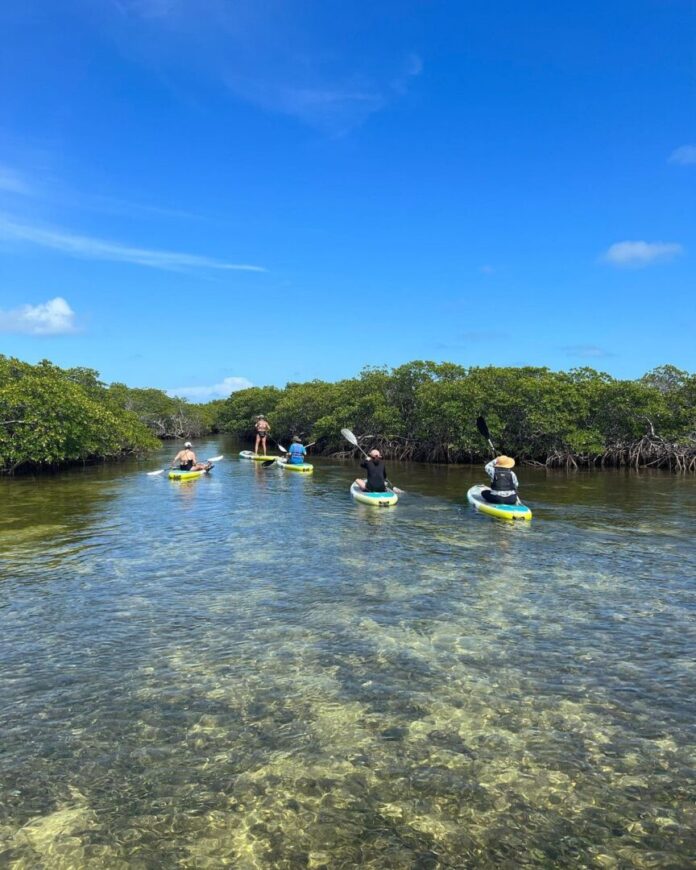

This park, 63 miles from Ft. Lauderdale International Airport, is yet another reason to visit Florida in the Spring. Here you can escape the chill still hanging in the air elsewhere, and spend your time boating, snorkeling, or swimming in the comparatively warm water. Although it is open all year, in the spring weather is neither too hot nor too cold.
The average temperature ranges from 66 degrees Fahrenheit to 77 degrees Fahrenheit. Be sure to visit the popular Boca Chita Key. It’s one of the park’s official “most visited places.”
Hike to the lovely lighthouse there. Hike the trail there and explore the scenery on this island too. You can also take a boat tour and do a little snorkeling around the world’s third-largest barrier reef there too. Admission to the park is free.
11 Capitol Reef


Visit Utah’s Capitol Reef in spring and enjoy the cooler but comfortable temperature and the newly-blooming desert wildflowers. You can hike the trails here and avoid the summer crowds. In fact, veteran visitors say you have a very good chance of having most of the hiking trail here all to yourself.
This place offers visitors a unique and active getaway. It is famous for its rugged rock formations due to its location on a water pocket fold that’s 100 miles in length. Here you can explore these colored rocks a.k.a. reefs created by many, many years of erosion.
Hike to Sunset Point as well and enjoy the incredible views. Visit Cassidy Arch and climb to the top of this 666-foot, natural arch of sandstone. Stop at the historic town of Fruita on your way home too.
12 Hawaii Volcanoes National Park
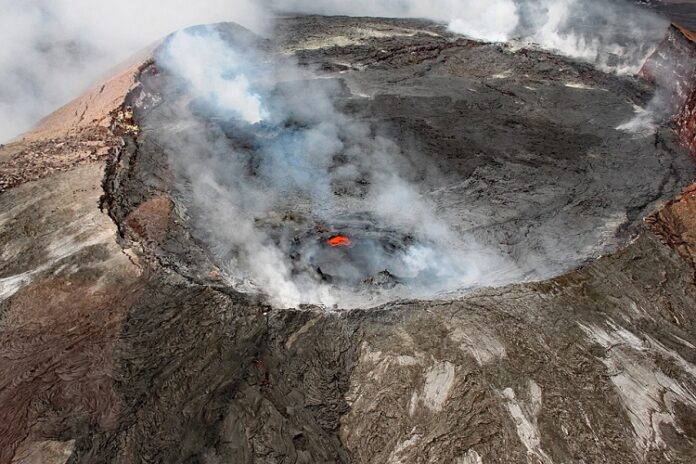

Spring is a great time to visit this national park in your rovin’ writer’s birth state. You will find this park on the Big Island. It’s a popular UNESCO Biosphere Reserve and is highlighted by a pair of active shield volcanoes. They are the Kilauea, and the largest volcano in the world, the Mauna Loa.
Oddly, while the state of Hawaii is associated with a sunny climate, the park’s 4,000-foot elevation frequently results in fog and rain. Thus, the park itself can be very humid in the summer, and quite wet in the winter. Since summer and winter are quite busy here, prices are the highest. Visit the park’s natural landmark in the spring and you’ll pay less for your stay, enjoy better weather in the park itself, and avoid the tourists too.
13 Zion National Park
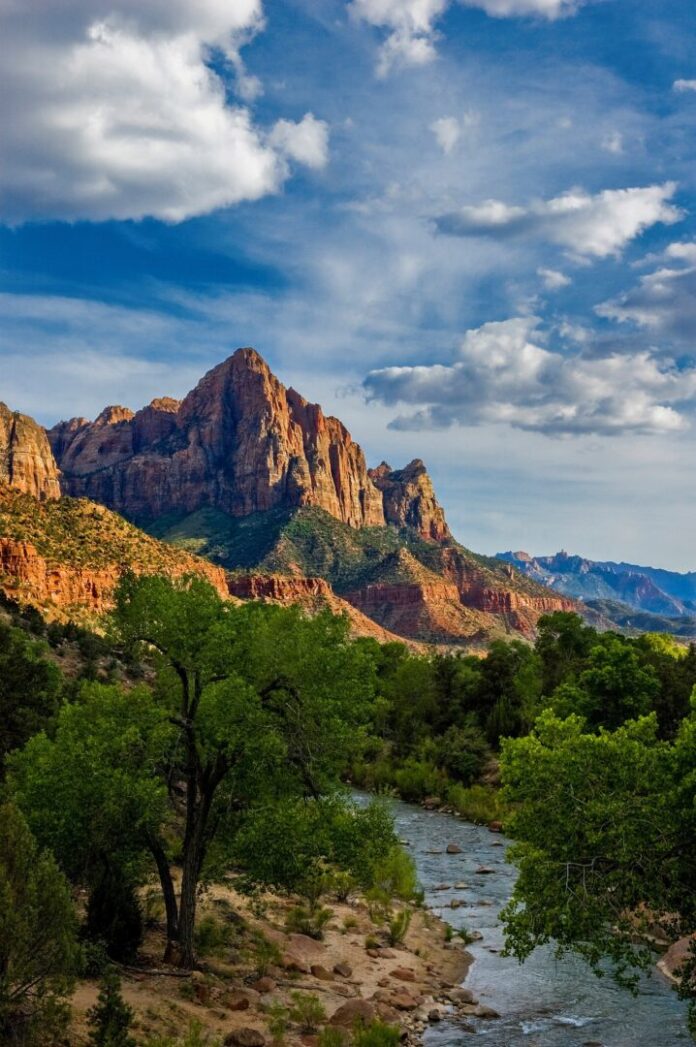

Beautiful Zion National Park in Southern Utah is yet another one of the best parks to see in the Spring. Famous for its twisting canyon and tall, rainbow-tinted red rocks, you can enjoy the assorted attractions here free of the summer heat and tourists. Take a stroll along the Zion Narrows Riverside Walk.
It’s under two miles in length, partially paved, and generally flat, making it an easy hike. If you’re feeling energetic, take one of the most famous hikes here and go hike the Narrows. The Canyon Overlook Trail is another short but noteworthy hike.
The hike is less than one mile with an elevation of 440 feet. The overlook offers travelers stunning views of the floor of the canyon and the various rock formations. Need a real challenge? Try hiking Angel’s Landing!
14 Grand Canyon National Park
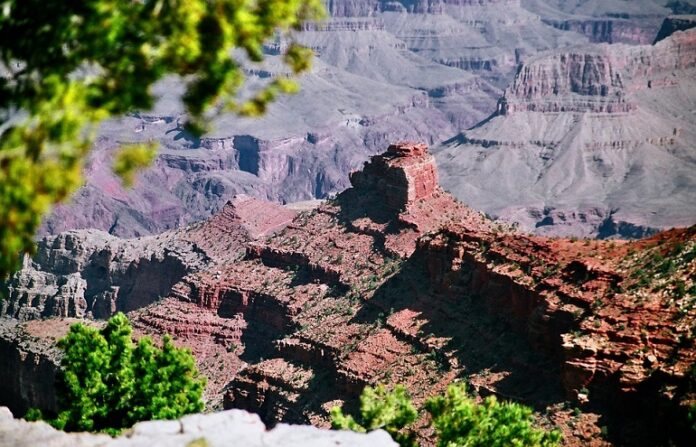

This is America’s second most popular national park. It’s visited by nearly six million people annually, on average. There are only three entrances to this highly popular park as well.
Regular readers know your wandering wordsmith hiked the Grand Canyon rim-to-rim one summer. After that experience with the summer heat and crowds of tourists along the rim, Spring is definitely a better time to visit this park. In springtime, the weather is warm enough for people to explore the park.
An entire area is closed in the winter because of snowfall. Furthermore, while spring mornings and nights can be chilly, it’s easier to deal with than the extreme summer heat. Springtime’s also the best time to see the sunrise here. Winter weather obscures the beauty. In the summer, sunrise is so early you have to head out way too early to reach the best viewpoints to see it.
15 Death Valley


Spectacular Death Valley is reportedly the most exciting in springtime. For it is then you get to enjoy the superb Super Bloom! Specifically, the distinctive Death Valley Super Bloom is actually a rare, noteworthy natural phenomenon when thousands of wildflowers bloom all over the desert.
The striking Super Bloom generally occurs in March. Mind you, if you miss this incredible event, fret not. This is a unique national park for numerous reasons.
For example, it is the continent’s driest, hottest, and lowest place. The unique landscape here is the result of numerous factors including alluviation, block faulting, evaporation, rain, wind, and volcanic activity. Other highlights here include the colorful Artist Palette, Badwater Basin, Devil’s Golf Course salt pan, Mesquite Flat Sand Dunes, Racetrack Playa, Ubehebe Crater, and Zabriskie Point. Grab a map at the Death Valley Visitors Center at Furnace Creek.
16 Joshua Tree National Park
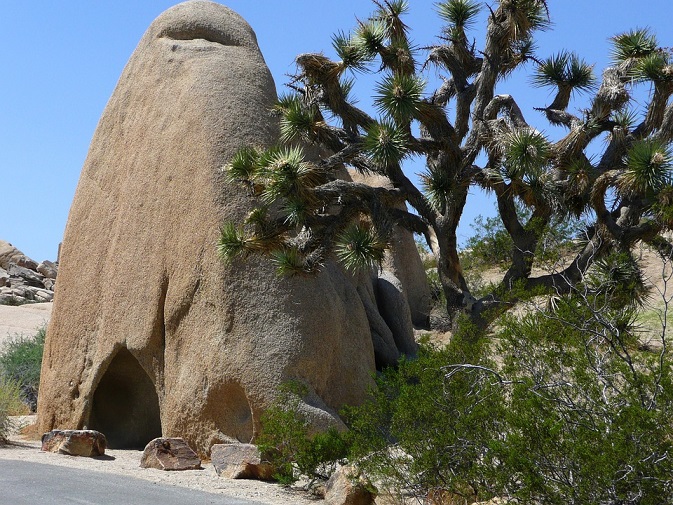

The park spans an area of almost 600,000 acres of wilderness, straddles two California deserts, and includes 300 miles of hiking trails. Veteran visitors can confirm springtime is the best time to visit this International Dark Sky Park. Unlike summertime, the spring weather is never higher than 72 degrees Fahrenheit and never cooler than 48 degrees Fahrenheit.
Plus, you avoid the summer tourist crowds. There will be less competition for spots in the daily ranger programs. There are also fewer four-wheel drive vehicles off-roading on the numerous backcountry trails.
There are fewer rock climbers and birders in the park in springtime too. Newbies may want to use the north entrance found in Twentynine Palms. If you want to see the Milky Way here, consider camping here for a weekend.
17 Great Smoky Mountains National Park


The popular Great Smoky Mountains National Park straddles the two states of North Carolina and Tennessee deep within the majestic Blue Ridge Mountains. It’s reported to be America’s most popular national park. Over 14 million people visited this place back in 2021.
Spring is a great time to visit this park. The weather is cooler, the crowds are comparatively smaller, and the beautiful rhododendron and mountain laurels are starting to bloom. This UNESCO World Heritage Site is also perfect for animal lovers because they can see North Carolina’s very last herd of wild Elk here near Cherokee. From the middle of May to early June, the Cataloochee Valley Elk give birth. Spring’s also a great time for birdwatching, camping, fishing, wildlife viewing, and day-hiking on sections of the Appalachian Trail.
18 Arches National Park
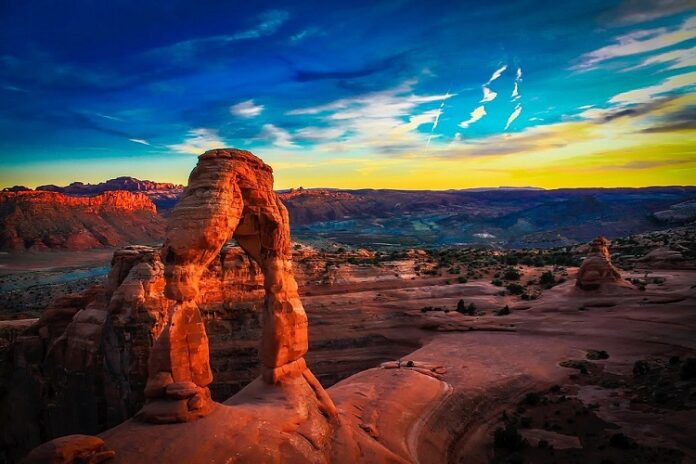

Another special spring destination is Utah’s Arches National Park. You not only beat the surprisingly large summer crowds, but you also beat the summer heat. Indeed, the springtime weather is beautiful and mild.
You only need a couple of days to see most of this park and the hikes to most of the arches are relatively easy and short. Of course, if you’re feeling athletic and really want more of a challenge, do the three-mile hike to the distinctive Delicate Arch. It is not only the park’s most famous arch but it is also a state landmark.
Other impressive natural highlights here include the Double Arch, the North Window, and the Turret Arch. You can camp here or stay in nearby Moab. There are four other parks relatively close too.
19 Shenandoah National Park
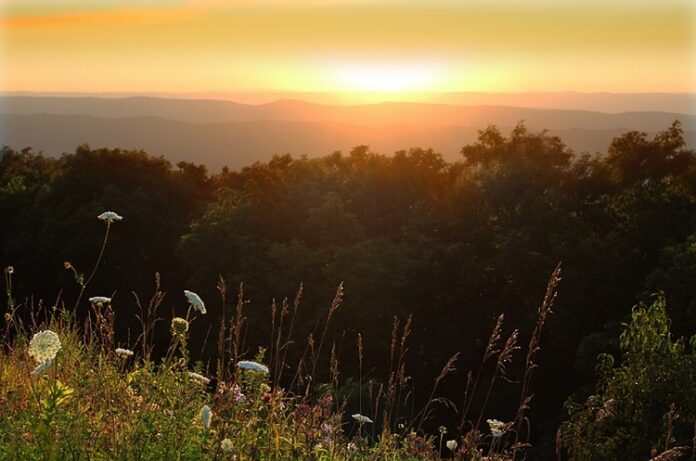
Winter at this Virginia national park is often harsh but in the spring the wildflowers appear, and everything seems new. The 500+ miles of sometimes historical hiking trails are once again clear because the snow has melted and the waterfalls thunder to life. This is especially great since a number of the hiking trails are actually waterfall trails.
Travel bloggers agree that some of the most well-known falls here are the Dark Hollow Falls, the Overall Run Falls, and the South River Falls. Need another reason to visit in the Spring? Skyline Drive, the most popular road in this park, is often at least partially closed in the winter but always open in spring. Additionally, the best time to see the colorful wildflowers blooming is from March until May. Check out nearby Luray Caverns too.
20 Saguaro National Park

Arizona’s Saguaro National Park is a great place to be from March through April. The desert is sunny with an average daily temperature range between 75 and 83 degrees Fahrenheit. It is unique in that it is a national park that has two individualistic areas that are roughly a one-hour drive apart.
Both sections include virtual forests of towering saguaro cacti that can only be found in the North American Sonoran Desert. Enjoy a scenic spring drive here. One popular drive is the Cactus Forest Drive found in Saguaro East.
Popular with both bicyclists and drivers, this is a nice, paved eight-mile loop. There is also the Bajada Loop in Saguaro West. This one is just six miles long. Into hiking? Check out the 160+ miles of hiking trails here.
